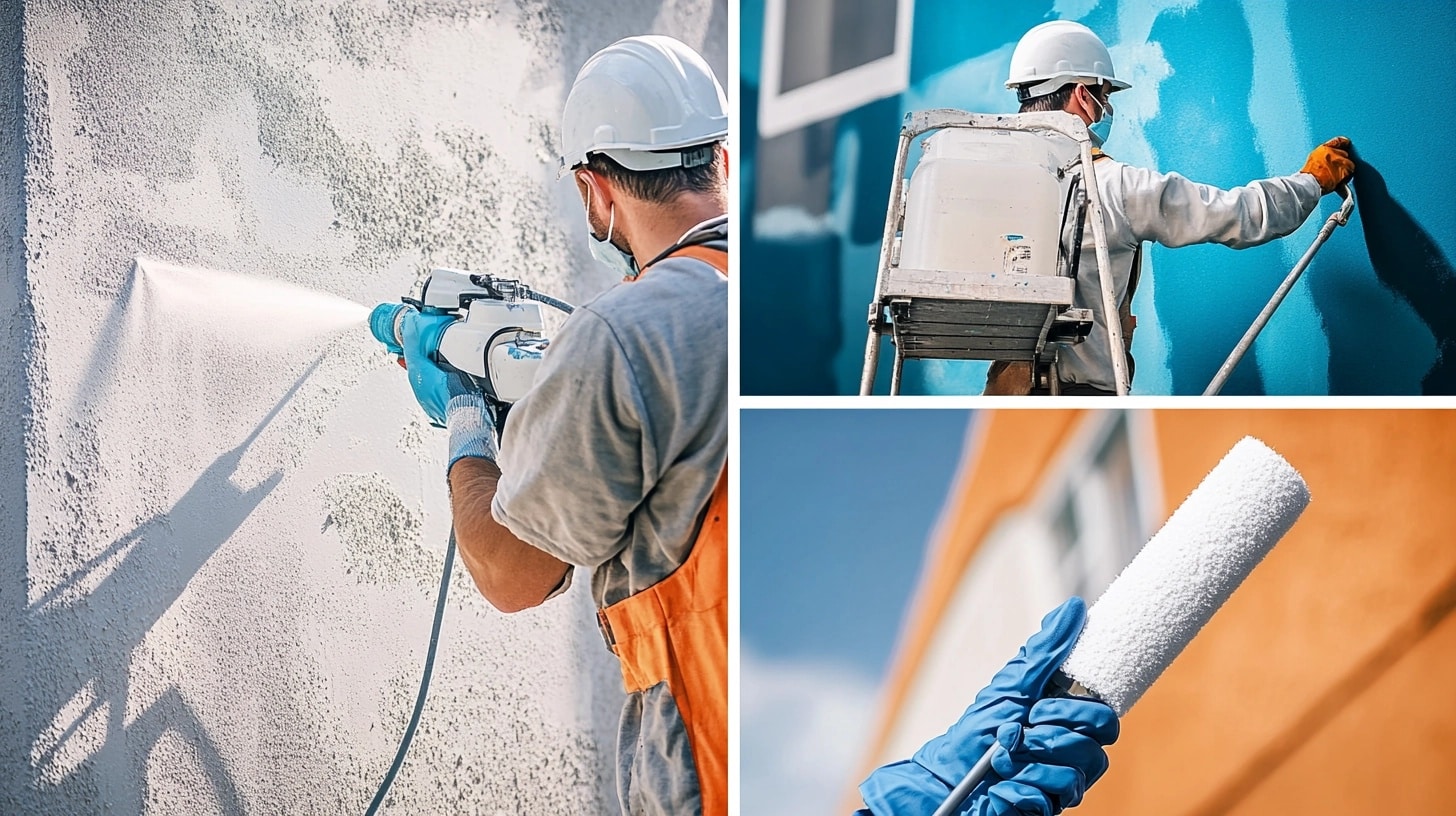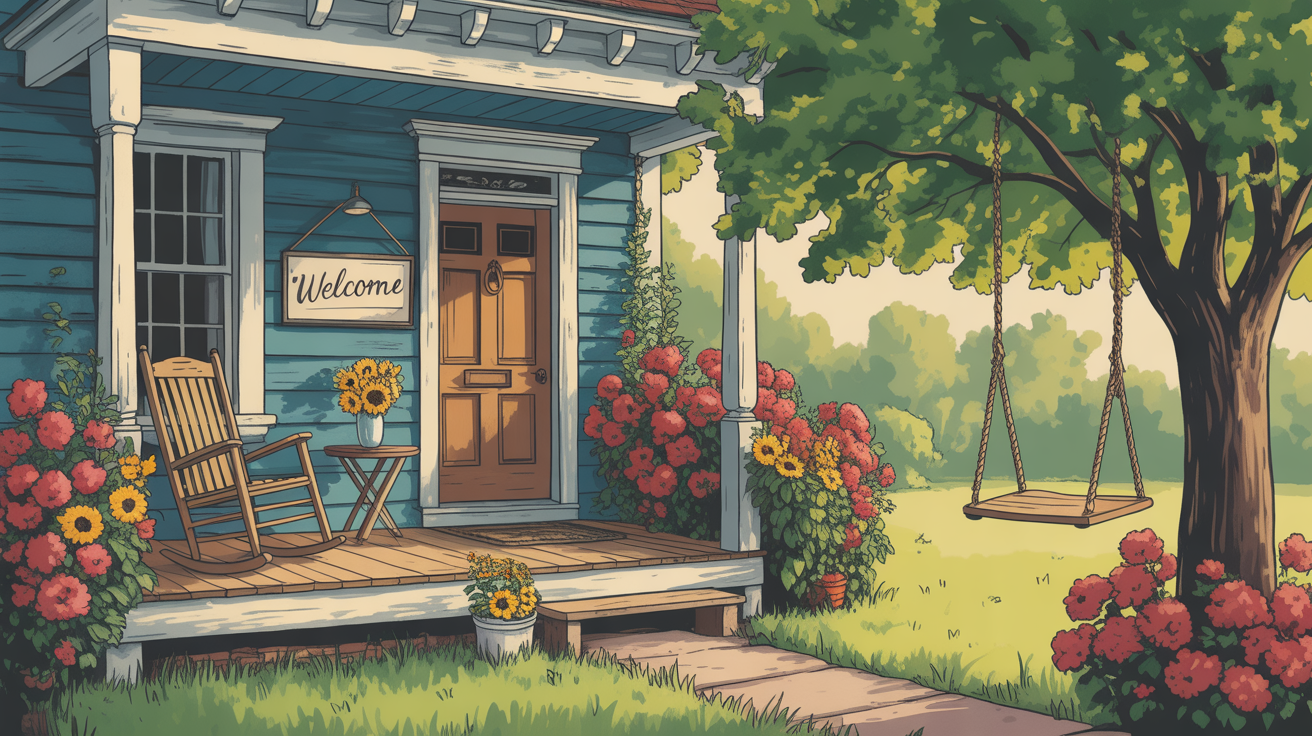Paint Sprayers and Rollers: Which One Is Supreme?
Standing in my local paint store yesterday, I watched another contractor wrestle with the same decision I faced twenty years ago.
“Sprayer or roller?” he asked, comparing price tags and promises on each box.
That moment took me back to my first major project – a sprawling Victorian that taught me how each tool writes its own story on our walls.
Since then, through thousands of projects, I’ve learned there’s more to this choice than simply picking the newest technology or the tried-and-true traditional method.
What are Paint Sprayers?
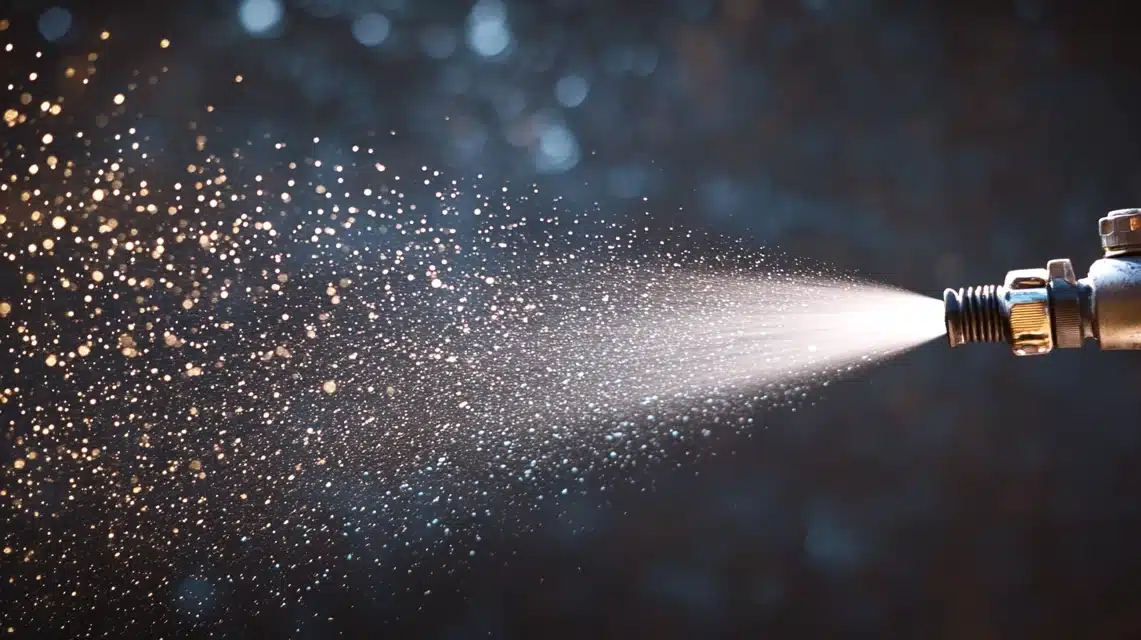
Modern paint sprayers transform ordinary paint into micro-droplets that create flawlessly smooth surfaces.
Unlike brushes or rollers that physically spread paint, sprayers atomize it, allowing for incredibly even coverage.
Think of a paint sprayer as conducting an orchestra of paint particles – each droplet finds its perfect place in the symphony of your surface.
High-velocity air or hydraulic pressure becomes your conductor, directing paint exactly where needed.
Watching paint flow through a properly tuned sprayer reveals why professionals often choose this method for showcase projects. Every pass builds layers of perfect coverage that is impossible to achieve by hand.
Key Features of Paint Sprayers
Unlike traditional tools, modern sprayers offer precision control through adjustable settings.
Watch how pressure adjustments affect spray patterns – from fine mist for delicate furniture to powerful streams for exterior walls.
Digital controls on newer models allow savable settings for different projects, while interchangeable tips transform one tool into many.
Think of coverage capabilities like fine rain versus brushstrokes—each droplet naturally finds its way into corners and crevices.
- Adjustable pressure control allows fine-tuning for different materials
- Multiple spray pattern options (horizontal, vertical, circular)
- Quick-change nozzle systems for different coatings
- Built-in filtration prevents clogging and ensures a smooth finish
- Portable design with various power options (electric, battery, air)
Pros
- Creates mirror-smooth finishes impossible to achieve with brushes or rollers
- Covers large areas in a fraction of the time compared to traditional methods
- Reaches into deep textures and difficult corners effortlessly
- Perfect for intricate details on furniture or trim work
- Allows application of thick coatings in single-pass
- Excellent for exterior projects requiring consistent coverage
- Reduces physical fatigue during large projects
- Ideal for textured ceilings and hard-to-reach areas
Cons
- Initial investment costs are significantly higher than traditional tools
- Requires thorough cleaning after each use to prevent clogging
- Uses up to 40% more paint through overspray and wider coverage
- Demands careful masking and protection of surrounding areas
- It needs proper ventilation and safety equipment
- The learning curve is steeper than traditional application methods
- Not cost-effective for small, simple projects
- Regular maintenance is required for optimal performance
What is a Roller?
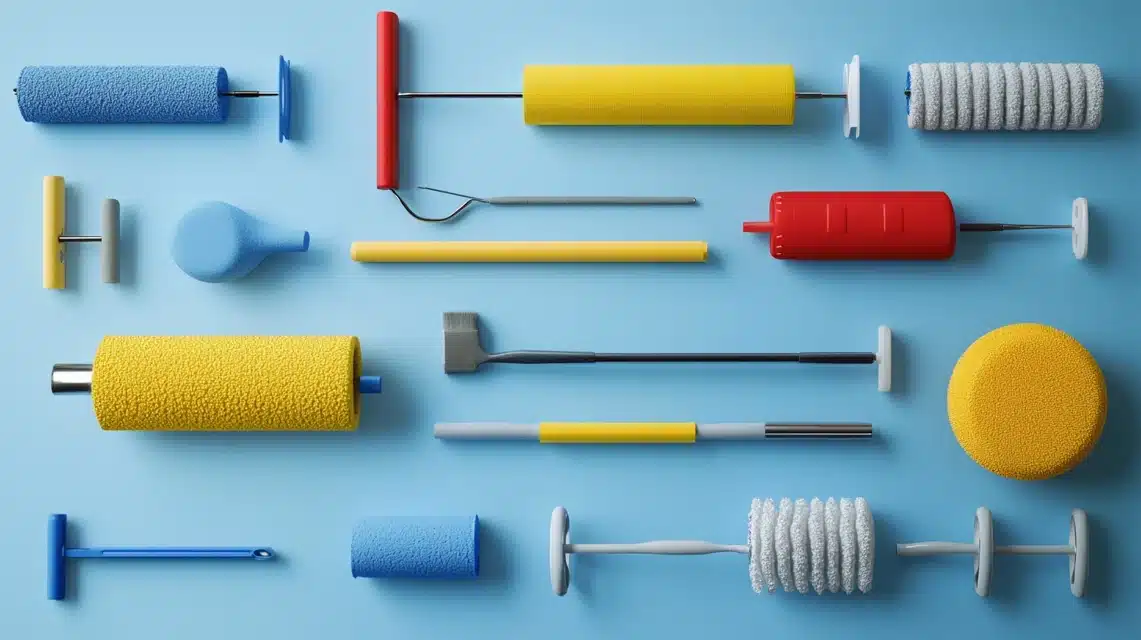
Unlike high-tech sprayers, paint rollers offer straightforward simplicity that’s stood the test of time.
What looks like a simple tool combines decades of frame and sleeve design engineering.
Watch how different nap lengths transform the roller frame from smooth-wall specialist to rough-surface master.
Every professional’s toolkit includes multiple roller setups – each telling its own story through texture and finish.
- Ergonomic grip designs reduce wrist fatigue during long projects
- Quick-release mechanisms for fast roller cover changes
- Adjustable extension poles reaching up to 16 feet
- Specialized corner rollers eliminate brushwork
- Anti-slip frames preventing roller sleeve rotation
- Available in sizes from 4 inches to professional 18 inches
Pros
- Provides excellent control over paint application in confined spaces
- Minimal setup time – pour and roll
- Superior coverage on flat surfaces with predictable results
- Significantly less paint waste compared to spraying
- No overspray concerns in finished spaces
- Perfect for touch-ups and small projects
- Allows easy color changes without extensive cleanup
- Budget-friendly for both tool and material costs
Cons
- Time-consuming on large-scale projects
- It can leave lap marks if the technique isn’t perfect
- Requires multiple passes for complete coverage
- Physical effort increases with project size
- Limited effectiveness on heavily textured surfaces
- May show roller stipple in glossy finishes
- It is not ideal for intricate trim work or details
- Regular roller cover replacement is needed for the best results
Making the Perfect Choice: Sprayer vs Roller
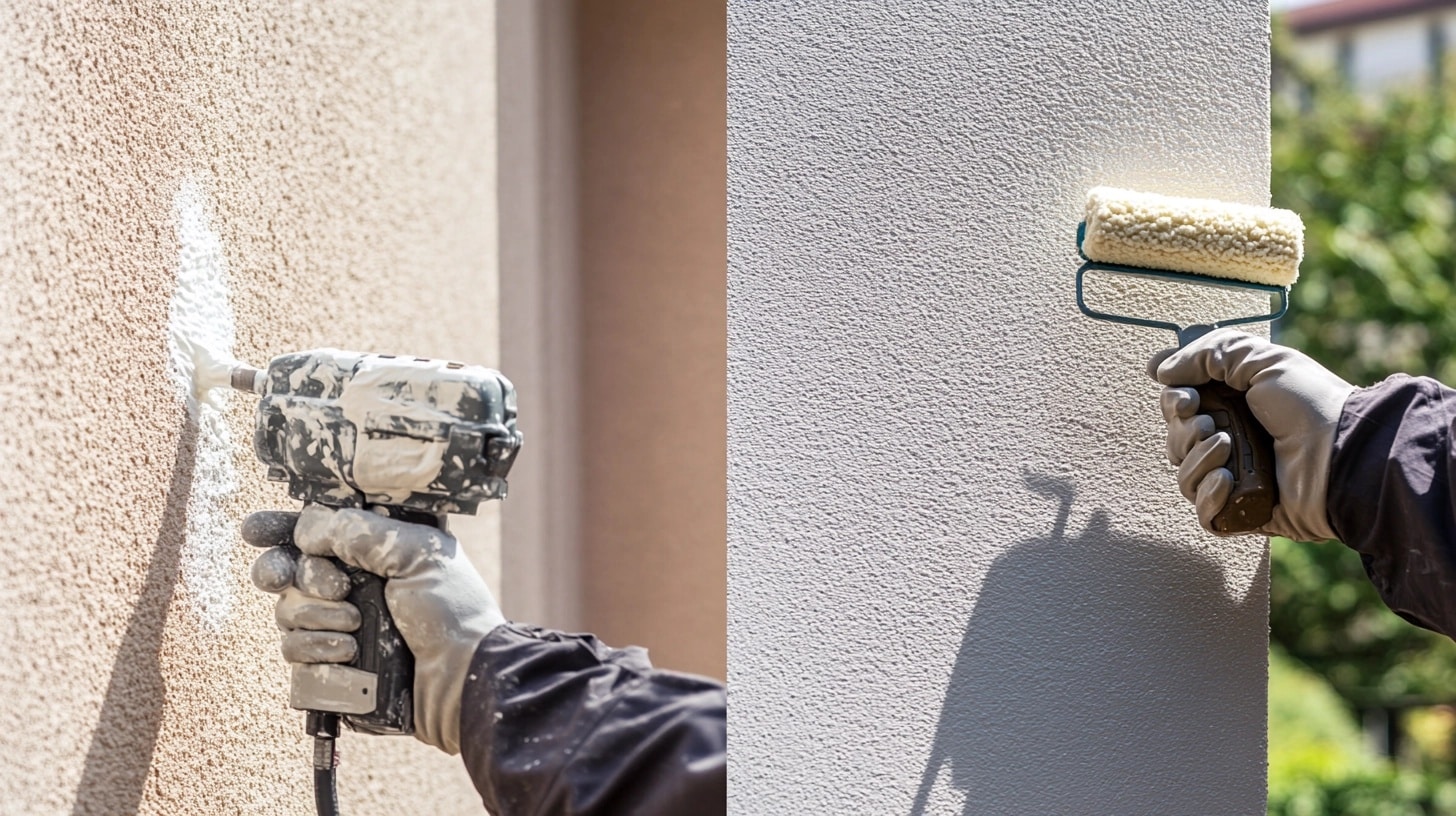
Let me share what twenty years of professional painting have taught me about choosing between these tools.
Last month’s Victorian restoration project perfectly illustrated why this decision matters.
At the same time, the exterior demanded efficiency from a sprayer, and interior trim work called for precise control of the roller.
1. Project Scope Considerations
Large exterior projects practically beg for sprayer efficiency, transforming days of rolling into hours of smooth coverage.
Yet small interior rooms often favor rollers, where sprayer setup and masking time might exceed actual painting time.
Consider your project’s scale carefully – anything over 500 square feet justifies sprayer setup time.
Watch how different surfaces influence tool choice. Textured walls welcome sprayer coverage, while smooth surfaces might beautifully showcase roller stipple.
2. Time vs. Quality Balance
Morning light reveals every finish flaw, making tool selection crucial for visible areas.
Sprayers excel at creating mirror-smooth finishes on cabinets and doors, where roller texture might detract from appearance.
However, some designers specifically request roller stipples on walls, adding subtle texture that hides minor surface imperfections.
Consider your project’s visibility and purpose. The roller’s slightly textured finish might benefit high-traffic areas, hiding future scuffs.
3. Environmental Factors Matter
Indoor projects require careful consideration of overspray and ventilation.
Rollers prove invaluable in occupied spaces where overspray could damage furnishings or affect air quality.
Exterior projects welcome sprayer efficiency, though wind conditions demand careful planning and technique adjustment.
Remember how different seasons affect your choice.
Summer heat accelerates drying, making roller application challenging on large surfaces.
4. Skill Level Considerations
First-time painters often find rollers more forgiving, offering immediate feedback and control.
Sprayers require practice achieving consistent coverage, though their learning curve rewards persistence with superior efficiency.
Consider your comfort with technology and willingness to master new techniques. Modern sprayers offer digital controls that, while powerful, demand understanding.
5. Budget Reality Check
Initial investments differ dramatically between basic roller setups and professional sprayer systems.
Factor in hidden costs – sprayers consume more paint through overspray, while rollers require regular cover replacement.
Long-term contractors often justify sprayer investments through time savings on large projects. Weekend warriors might find roller kits more economical for occasional use.
Remember how project frequency influences this decision. Regular painters often benefit from owning both tools, choosing based on specific project demands.
Final Thoughts
After decades of witnessing both tools in action, I’ve learned that success lies not in choosing the “best” tool but in selecting the right one for each specific task.
Remember that many professional projects combine both methods – perhaps spraying large surfaces while rolling trim or vice versa.
Don’t feel pressured to commit exclusively to either approach.
Consider starting with quality roller equipment and mastering its techniques before investing in spray technology.
This progression builds fundamental skills while keeping initial costs manageable.
Remember that proper preparation and technique matter more than tool selection.
Whether wielding a sprayer or roller, attention to detail and patience create professional results.
Let your project’s specific needs guide your choice, and don’t hesitate to adjust methods as work progresses.
After all, the best painters know flexibility often leads to superior results.
Frequently Asked Questions
Is It Better to Paint with a Sprayer or Roller?
Neither tool claims absolute superiority—each shines in specific situations.
Sprayers excel on large exterior projects and detailed trim work, while rollers master interior walls and small spaces.
My recent church renovation used sprayers for soaring ceilings and rollers for detailed wainscoting.
Consider your specific project needs rather than seeking a universal “better” option.
Why Don’t Painters Use Sprayers?
Professional painters use sprayers frequently but selectively. Indoor spaces often prevent sprayer use due to overspray concerns.
Setup time, masking requirements, and paint consumption make rollers more practical for smaller jobs.
Last week’s kitchen remodels perfectly demonstrated this—cabinet spraying but roller work for walls saved time and materials.
What Are the Disadvantages of Spray Painting?
Overspray presents the biggest challenge, requiring extensive masking and protection.
Equipment costs run higher than traditional tools, while cleanup demands more time and solvent use.
Paint consumption increases by 30-40% through overspray.
Consider ventilation requirements and weather conditions for exterior work.
However, proper technique minimizes these drawbacks significantly.
Do You Waste More Paint with a Sprayer?
Yes, expect to use 30-40% more paint when spraying versus rolling.
Overspray accounts for most waste, though proper technique significantly reduces this.
My crews factor this increased consumption into project estimates. However, time savings often justify additional material costs on large projects.
Should You Spray Paint or Roller Paint the Interior Walls?
For most interior walls, rollers provide the most practical solution.
They offer better control, less prep work, and minimal overspray concerns.
However, textured walls or large open spaces might benefit from spraying efficiency.

